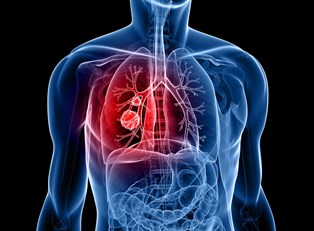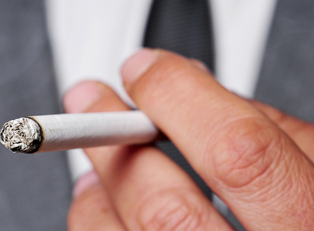No one likes to hear the word cancer, and no one wants to be diagnosed either. However, surprisingly enough, it happens to people everyday. Among the many different types, lung cancer leads the way with the most deaths in the United States. Here is a look at the signs and symptoms of lung cancer.
Lung cancer begins with an uncontrollable amount of cell growth in the lung tissue that can quickly spread to other areas of the body if not treated. With more information available through studies we are well aware of the risk factors, and among the few causes of this disease, smoking is at the very top. According to studies, smokers and those exposed to secondhand smoke are at the highest risk of being diagnosed with lung cancer. There are chemicals in cigarettes that break down and damage the cells within the lungs. Additional risk factors that increase the chance of being diagnosed include smoking, secondhand smoke, alcoholism, over exposure to harmful chemicals and gas, and or a family history of previous lung cancers. The thought of ever getting this disease is frightening but there is information, treatments, and medications to help ease the pain and worry.
Lung Cancer Signs and Symptoms
If symptoms are prevalent there is a problem. For the symptoms to be so noticeable means that the lung cancer is more than likely in an advanced stage. If there is a cough that doesn't go away, coughing of blood, shortness of breath, headache, loss of weight, and or chest pain accompanied by wheezing, than chances are likely that tumors are present. If any of the symptoms are taking place, then a doctor should be notified and an appointment should be made. An early recommendation for treatment may be made on quitting smoking as soon as possible as well as some medications. After tests and diagnosis some more serious treatment may be needed. Tumors can be detected under X-ray or by tissue samples. Sometimes it may be necessary for a tube to be inserted into one's throat for a tissue sample to be taken; however, more often tumors are detected under X-ray. The most productive and positive method to apply is to stop smoking. While tests are run and doctors speculate the severity of the disease quitting smoking gives one a since of control. Immediately after quitting the lungs began to heal and repair themselves.
Lung Cancer Treatment
Depending on one's overall health and the stage of lung cancer, a treatment plan is set underway with the doctor. Different types of treatment include surgery, chemotherapy, radiation, supportive care, or other medication. Some medications can help block chemicals that cause cell growth in the lungs. Other medications can stop tumors from growing. Treatment that includes surgery is another option but poses for risks of bleeding and infection. The tumor is removed from the lungs during surgery as well as some healthy tissue for further testing. Rest and therapy are vital to recovery after surgery. A major treatment used today is chemotherapy. Chemotherapy is administered through a vein or orally and is used to help reduce some side effects that cancer causes. Radiation therapy consists of X-rays that are targeted at the lungs thus killing cancerous cells. Through all the madness and energy it takes to go through treatment, paitents can get quite worn out. In this case alternative options can be considered. Yoga, acupuncture, meditation, massage, and or hypnosis are all really great ways to help ease the mind, body and spirit when it comes to coping and living with lung cancer.



